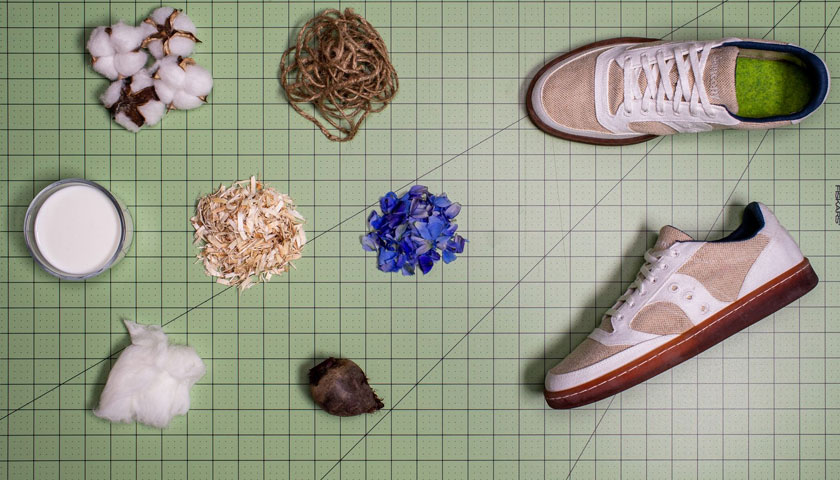Saucony have launched their most sustainable shoe ever. Cotton. Jute. Wool. Rubber. Wood. Gardenia. Beet. The new Jazz Court RFG contains only these 7 natural and renewable materials. It does not contain plastic or petroleum derivatives. This is Saucony Originals’ formula for achieving a more sustainable future. The brand is committed to leaving a lighter footprint on the planet by carefully choosing materials and processes in order to continue to create the best trainers possible with the least environmental impact.
Doing things well takes time. Jazz Court RFG is the result of years of research; the result of a long-standing commitment to nature and man. And today it is ready to unveil itself in its own guise: a classic technique with modern production, an old-school approach that opts for natural methods.
The first release in raw cotton debuted on 10th March, followed by a dark grey and a green version in April. The model is called Jazz Court RFG because it mounts a Jazz upper on a court sole. RFG stands for Run For Good, Saucony’s motto: an invitation to people around the world to come together to make the world a better place through the transformative power of running; a power that bridges the gap between who we are and who we want to be. By choosing to call the new model RFG, the statement is even stronger: the world will also be a better place thanks to the small and big steps we take to leave “a lighter footprint, for the good of the planet”.
Many details made the difference in this change: gardenia flowers were used for the blue dye of the collar lining, beetroot juice to print the size information in the insole. Paint was replaced by a mixture of flour and water to mark the stitching points while chalk was used to mark and align the upper and midsole. Finally, a true side seam joins the upper to the midsole without the use of synthetic adhesives. Naturally, the packaging has also been designed to have the least possible impact: the paper and cardboard used are 100% recycled and traditional ink is replaced by a soy-based ink.
